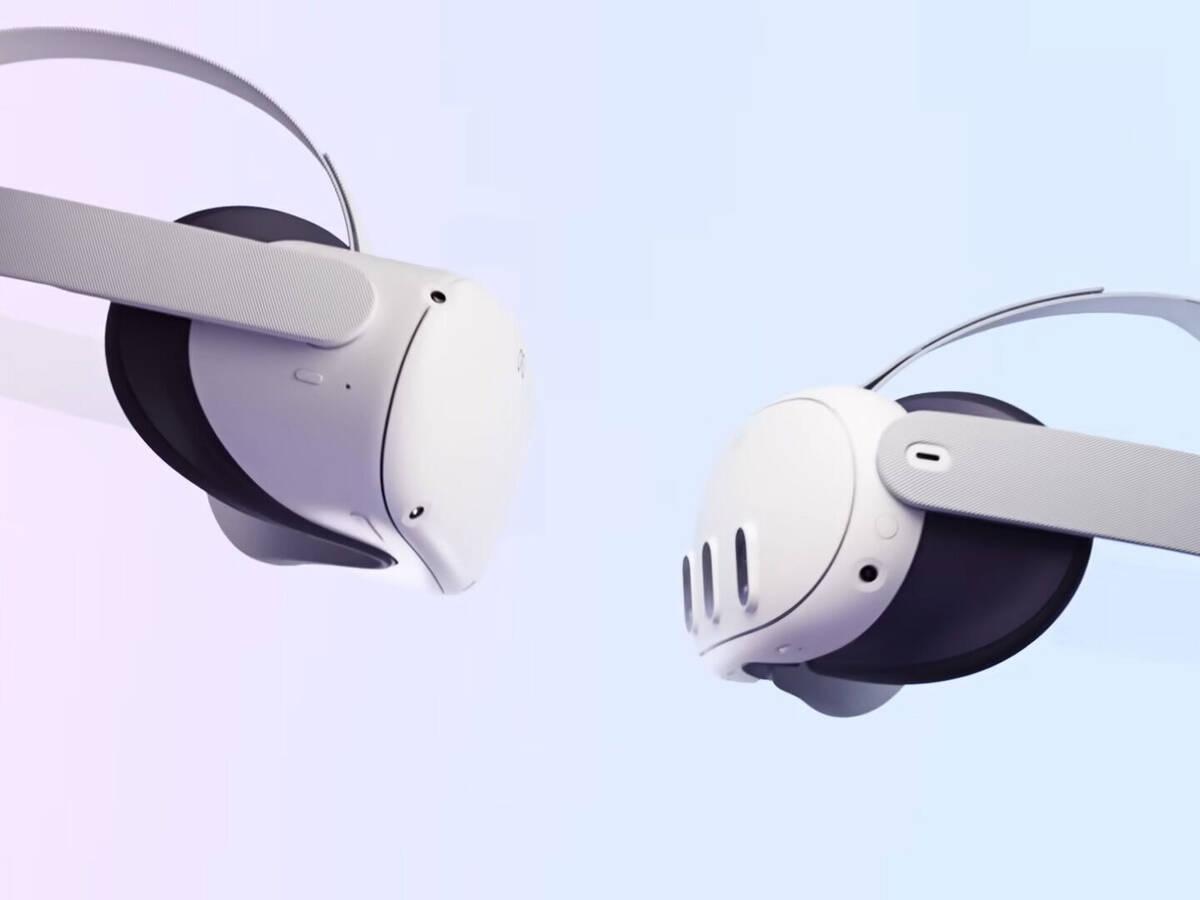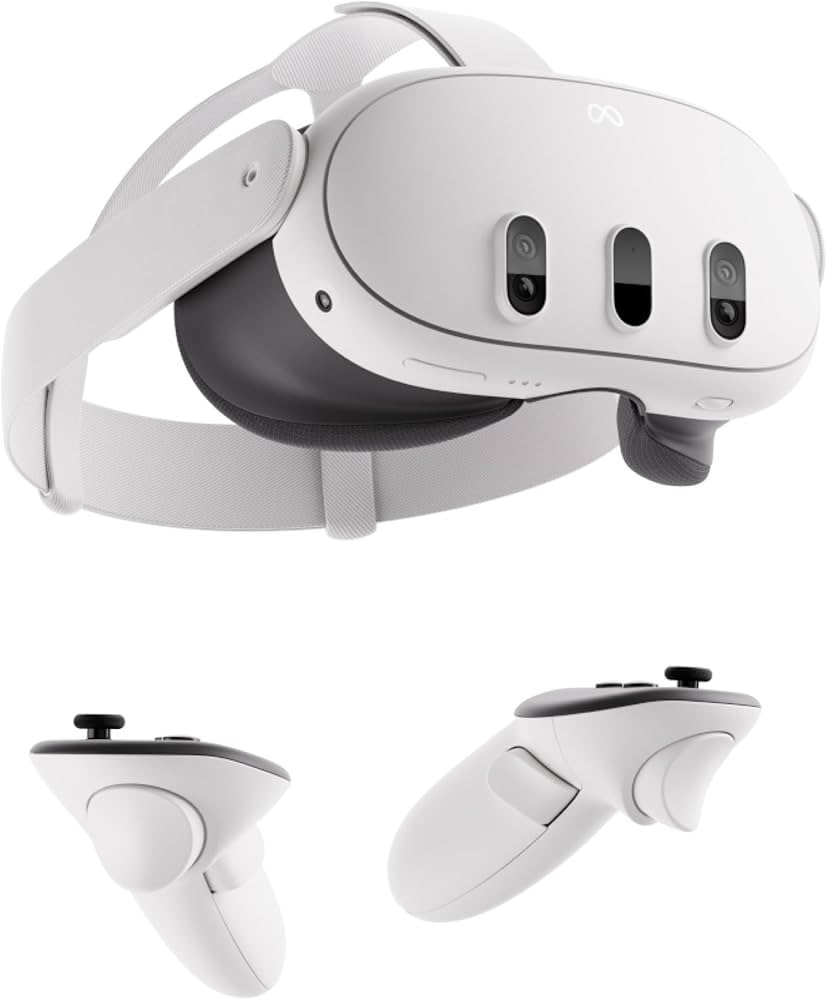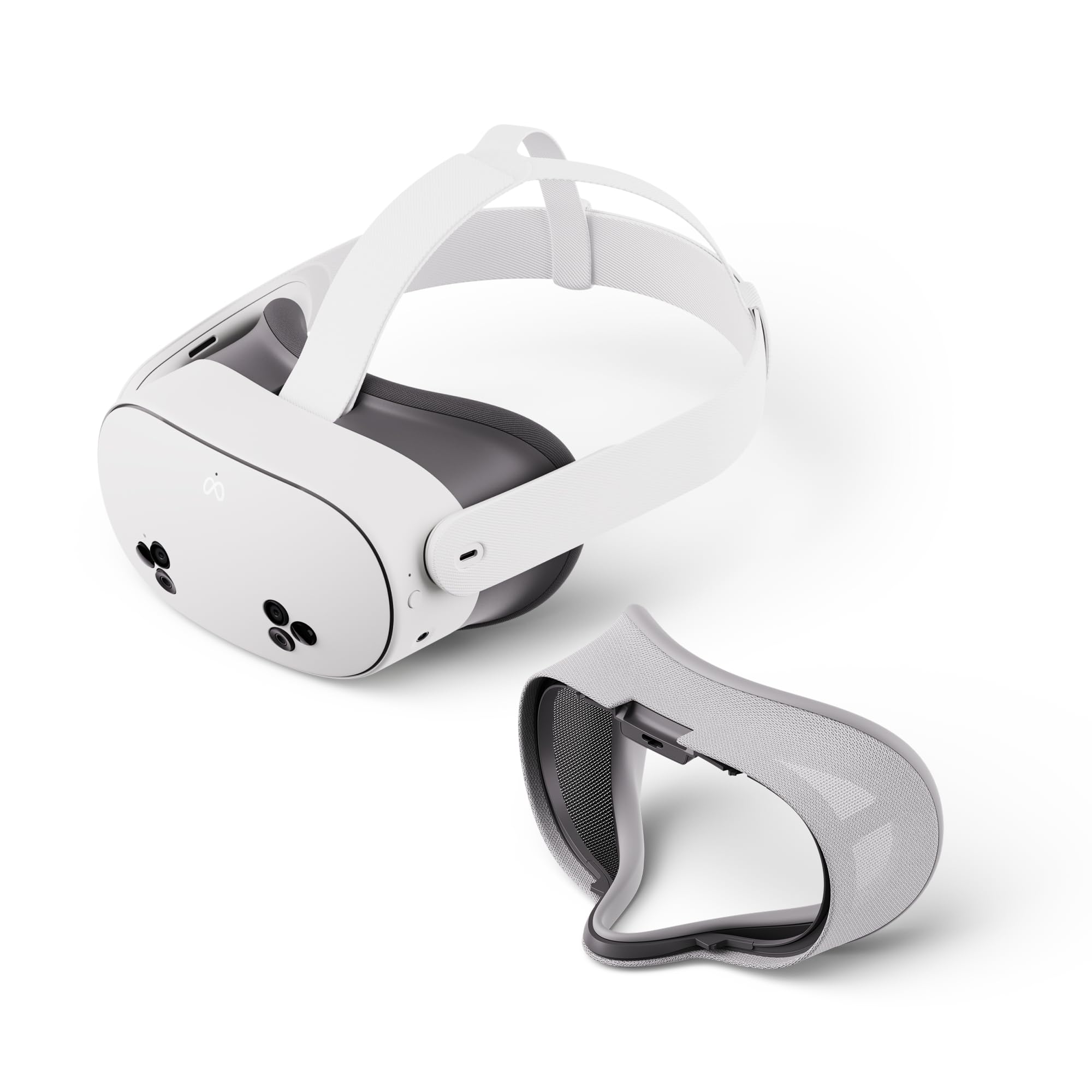We’ve all had that moment—maybe while lining up a perfect Beat Saber slice or peeking over the edge of a digital cliff—where you wonder just how far VR tech can really go. The Meta Quest 3 made a strong case for that next leap forward, packing sharper visuals and spatial smarts into a familiar headset. But now, there’s a new contender in the room: the Meta Quest 3S, offering a slightly more modest package with the same processor under the hood.
At first glance, they seem like twins. But take them for a spin, and differences start to stack up. It’s not about which one works—it’s about which one works better for how you play, move, and explore. So, if you’re on the fence or just plain curious, let’s dig in and figure out what makes these two VR siblings tick.
Subtle design shifts, same Meta identity

When it comes to first impressions, these two headsets don’t scream for attention. The Quest 3 and 3S share the same minimalist white chassis and sleek, front-heavy silhouette, making them nearly indistinguishable to the casual eye. You get the same adjustable Y-shaped headstrap, and even the controller design is a copy-paste job—no complaints there, since the ergonomics are already pretty dialed in.
That said, the front face of each headset tells its own story. The Quest 3 wears three vertically aligned sensor clusters on a curved panel, while the Quest 3S opts for a flatter, triangular camera configuration. It’s not just a cosmetic choice—it reflects slight engineering tweaks—but in everyday use, both deliver solid tracking and consistent performance in mixed-reality and full-VR environments.
From a comfort perspective, we couldn’t pick a winner. Weight distribution feels balanced, and fit adjustments are straightforward on both models, making them easy to share or pass around at parties. You’re not sacrificing ergonomics with either option.
Resolution makes the difference pop
This is where things start to separate. The Meta Quest 3 comes with a 2,064 x 2,208 resolution per eye, packing in over 1,200 pixels per inch. The Quest 3S steps things down to 1,832 x 1,920 per eye, which means around 773 pixels per inch. If numbers make your eyes glaze over, here’s the translation: the Quest 3 looks crisper, cleaner, and more lifelike, especially when you’re dealing with fine text or detailed textures.
Field of view matters too. The Quest 3 delivers 110º horizontal and 96º vertical, while the 3S narrows that to 96º by 90º. It doesn’t sound huge, but that extra peripheral range in the Quest 3 creates a more open, natural feeling, especially in fast-paced or open-environment games.
Lens technology is also a key distinction. The Quest 3 uses advanced pancake lenses, which are thinner, lighter, and produce fewer visual distortions. You also get continuous interpupillary distance (IPD) adjustment, allowing precise alignment for different users. The 3S goes with traditional Fresnel lenses and a 3-point IPD selector, which works—but isn’t nearly as flexible or sharp around the edges.
The Quest 3’s display and lens combo is simply better. You notice it in clarity, but also in comfort—less eye strain, less glare, smoother visuals.
Mixed reality gets a color upgrade—on both
Now here’s a nice surprise: both headsets come with full-color pass-through cameras, which means you can see your real surroundings without removing the headset. Whether you’re playing mixed-reality games or just trying to grab a drink mid-session without knocking it over, this feature changes how you use the headset day to day.
Each model includes dual 4MP sensors for passthrough, and the quality is solid across the board. It’s not photorealistic, but it’s more than good enough to read a phone screen or walk around the room without feeling blind.
In this department, the Quest 3 and 3S are neck and neck. If mixed reality is on your radar, you won’t lose out either way.
Same processor, same muscle

Let’s kill one myth right now: performance isn’t where the Quest 3S lags behind. Both headsets run on the Snapdragon XR2 Gen 2 platform and come with 8GB of RAM. That means apps load quickly, framerates are stable, and the overall experience feels snappy and modern.
You can launch demanding games like Red Matter 2 or high-fidelity productivity tools, and you won’t notice a drop in smoothness between the two models. The difference is more visual than technical—the 3S can run the same content, but it won’t look quite as sharp or immersive.
This is a big win for the Quest 3S, because it keeps up with the full-fat model in performance and content support.
Motion tracking and controllers: no trade-offs here
Whether you’re swinging a sword, reaching for a virtual lever, or simply navigating menus, the experience on both headsets is virtually identical. Meta’s inside-out tracking system is solid, and both models support full six degrees of freedom (6DOF).
You get the same Meta Quest Touch Plus controllers, with haptic feedback, reliable button placement, and accurate motion sensing. Hand tracking is also present on both, although it’s still best used in specific apps rather than as a full replacement for controllers.
This parity is great news—no need to worry about functionality when choosing between the two.
Battery life: the lighter display sips less power
Here’s a twist. You’d expect the Quest 3’s larger 5,060mAh battery to give it the edge, but the Quest 3S’s lower-res display and simpler optics help it squeeze more time out of a smaller 4,324mAh cell.
In practice, both headsets run for about 2 to 2.5 hours per session, depending on usage. But in low to medium brightness settings or mixed-reality apps, the 3S might give you an extra 10–15 minutes on average. It’s not game-changing, but if you hate charging or tend to play long sessions, that small edge might matter.
Storage: different tiers, different freedoms

This part’s simple. The Quest 3 is available in a 512GB variant, and that’s massive in VR terms. You can load up dozens of games, keep recordings, and still have room to spare.
The Quest 3S comes in 128GB and 256GB options. For casual users or those who mostly stream, that’s plenty. But if you like to install everything locally or plan to shoot high-res mixed reality video, those smaller tiers might feel cramped fast.
Storage isn’t expandable, so what you choose at purchase is what you live with. If flexibility matters, the Quest 3 offers peace of mind.
The VR playground stays the same
Here’s the part where Meta keeps it nice and simple. Both headsets have access to the same store, the same apps, the same updates. Whether you’re building in Horizon Worlds, losing hours in Beat Saber, or socializing in VRChat, you’re getting the same ecosystem.
PCVR compatibility is equal too. Whether wired through Meta Quest Link or wireless via Air Link, both the 3 and 3S can stream content from a gaming PC. You’re not locked out of the big leagues just because you went with the lighter model.
Accessories, comfort, and wearability
Every strap, every facial interface, every grip—it all works across both. Meta kept things interchangeable, and that makes switching between models, sharing gear, or upgrading easier.
Weight-wise, the 3S has a very slight edge, but in practice, both feel pretty balanced once you’ve adjusted the straps properly. If you’re using an Elite Strap or a battery counterweight, you’re golden either way.
Nothing in this department swings the vote.
Audio immersion: it’s all in your ears

Both headsets use the same spatial audio speakers, embedded in the side arms. And they’re surprisingly good. Positional audio is sharp, and there’s no need for extra headphones unless you’re a true audiophile.
If you want deeper immersion, both support Bluetooth and USB-C headphones. But the base experience is clean, open, and immersive enough to play without accessories.
Looking forward: who stays relevant longer?
With identical CPUs and shared software, both headsets are safe bets in terms of longevity. You’re not missing out on core updates, new releases, or Meta’s experimental features.
But we’ll be honest: the Quest 3’s higher resolution and premium optics give it more visual headroom for future experiences. As developers start pushing limits and building for more demanding scenarios, those extra pixels and sharper lenses will show their value.
It’s not about raw performance—it’s about visual ceiling, and the Quest 3 sits higher.
So, where do we land?
Let’s be clear—the Meta Quest 3S is not a budget headset in the usual sense. It’s powerful, polished, and absolutely worth your attention if you’re looking for top-tier VR at a more accessible price.
But if you want the best experience Meta has to offer right now, the Meta Quest 3 pulls ahead with better lenses, higher resolution, and future-proof visuals that just feel more immersive.
You’re not losing much in terms of performance or content either way. But those visual details, that extra clarity, and the adjustable optics? You feel them every single time you put the headset on.
So yeah—the Quest 3 takes the win. Not because the 3S isn’t great, but because sometimes, the little things add up—and in VR, clarity is everything.


